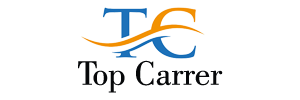
Remember that your designs will be used by multiple users different from one another. Understanding the applications of these eight types of user interviews empowers designers to strategically choose the most fitting approach based on project goals and the specific information sought. Each type brings a unique flavor to the user research process and contributes to creating designs that resonate with user needs and expectations. In contrast, unstructured interviews embrace a more open-ended and flexible approach. Participants are encouraged to express themselves freely, leading to a qualitative exploration of their thoughts and experiences. • Structured interviews have well-structured questions in a pre-determined order; while unstructured interviews are flexible and do not have a pre-planned set of questions.
- Recruiters start interviews by introducing themselves and any panel members, explaining their roles, offering the candidate water, and establishing rapport.
- Pick one thing, make sure it’s relevant to the role and company you’re interviewing for, and try to weave in a story to help illustrate your point.
- They allow the researcher and participants to have a comfortable relationship to generate more in-depth responses regarding sensitive topics.
- Organizations can formulate their marketing strategies based on the information received from the respondents.
Often interviewers who conduct unstructured interviews fail to identify the high-quality candidates for the job. See the section on interview structure issues for a more in-depth discussion. In a case study interview, the hiring manager or committee gives the applicant a real-world client situation to analyze and solve. Unlike many job interview questions that focus on a candidate’s past experiences, this one asks how they would approach a hypothetical scenario.
Possible answer to “Tell me about a time you demonstrated leadership skills.”
There may be occasions where people contradict their statements. These variations can offer valuable insights into the complexity of user experiences. However, when you question them on such discrepancies, they might get defensive or uncomfortable. Approach these contradictions carefully and delve deeper to uncover the nuances that might not be immediately apparent. This type ventures beyond the controlled setting, uncovering insights that might be missed in a traditional interview setup. Observing users in their context allows designers to identify specific pain points, preferences, and behaviors that influence the user experience in a real-world scenario.

Sign up for our 15-day free trial of Workable’s end-to-end recruiting software and start hiring better people, faster. Consider external factors influencing participants’ responses, such as cultural differences or situational circumstances. It is crucial to account for these factors to avoid misinterpretations and incomplete understandings of the user experience.
